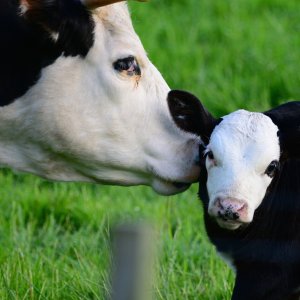
By Vet Victor Oudhuis
Feeding plenty of good, clean colostrum as soon as possible after the calf is born has long been known to have positive health benefits, but should we be feeding colostrum or alternatively transition milk for longer?
After the first 24 hours, many producers switch their calves to either a milk replacer or whole milk feeding regime. However, recent research suggests that there may be some benefits of feeding colostrum or transition milk for a longer period, even after the critical 24-hour window has passed.
Feeding milk replacer/whole milk supplemented with colostrum or just transition milk (day 2 and 3 milk) on its own for an extended period improves gut development as it contains important bioactive compounds, hormones, and growth factors for the gut. As the gut develops better the amount of nutrients the calf can absorb is increased, resulting in calves having greater bodyweights and average daily gains (ADG) at weaning.

Feeding antibody rich milk for longer has long been known to reduce the risk of calves scouring, as the local antibodies form a sort of “Teflon layer” within the gut, protecting the calf from scour pathogens. However, it also appears that calves are wasting less antibodies that were absorbed in the blood after colostrum feeding from going back into the gut lumen trying to fight infections. Antibody levels will therefore persist for longer in the blood and reduce mortality and respiratory disease risk.
Ideally colostrum or transition milk should be pasteurised to prevent spread of disease. Alternatively colostrum replacer, although costly, could be added to milk replacer/whole milk as well. Feed the transition milk for at least 4 days, before gradually transitioning to milk replacer/whole milk.
Having a good colostrum protocol is vital, but maybe it should not be the only priority when feeding new-born calves.